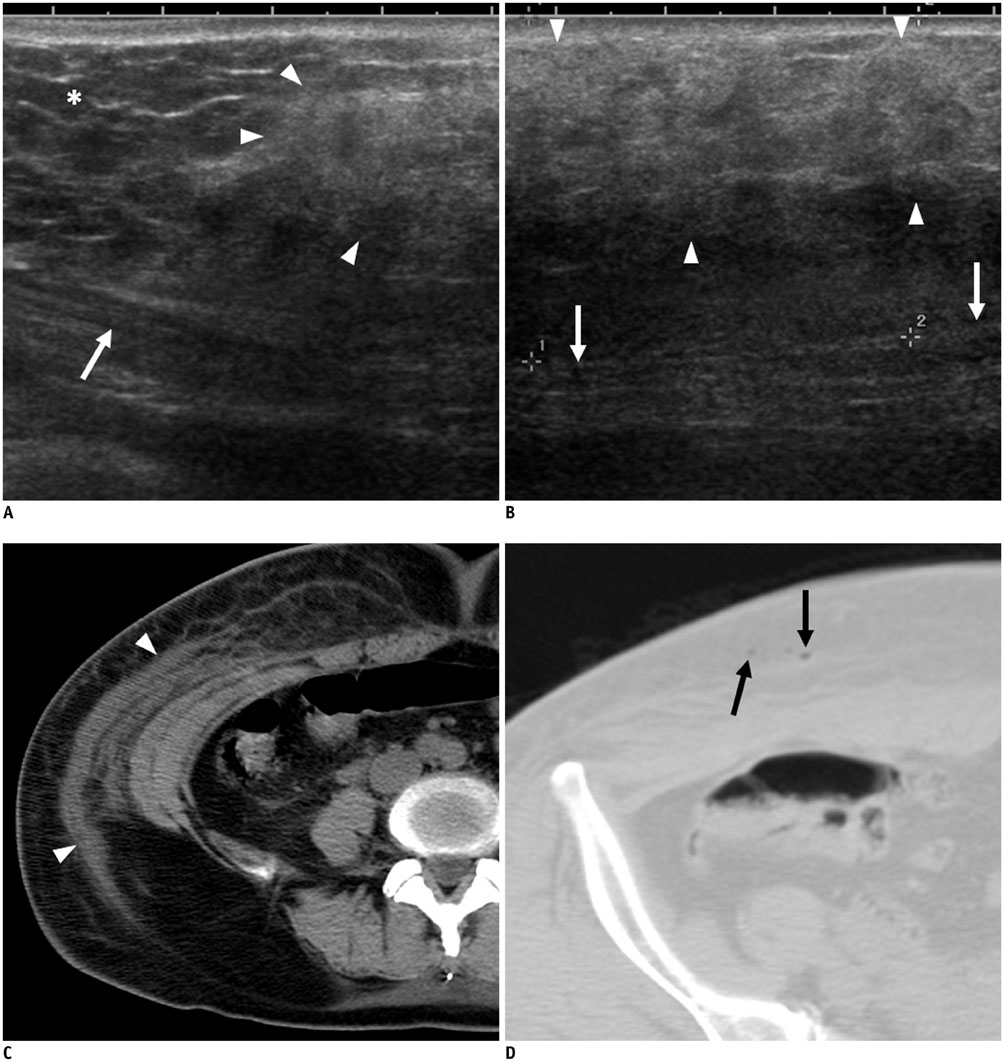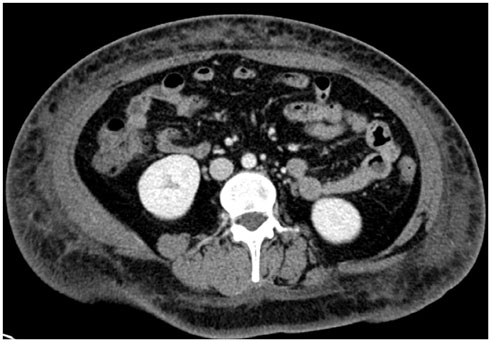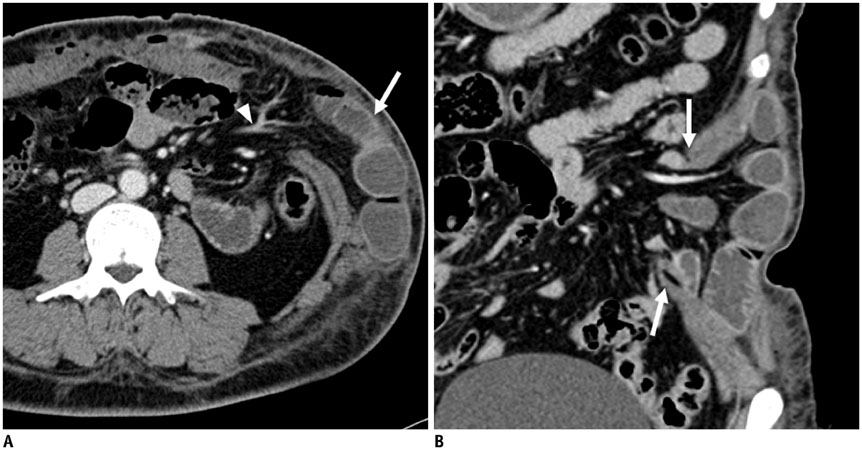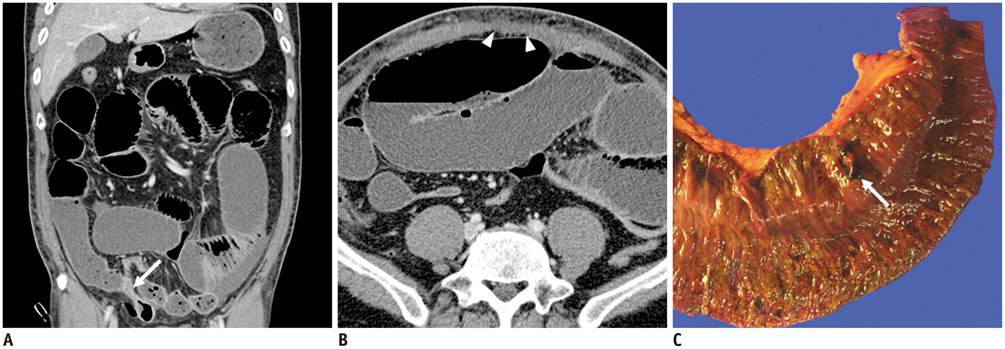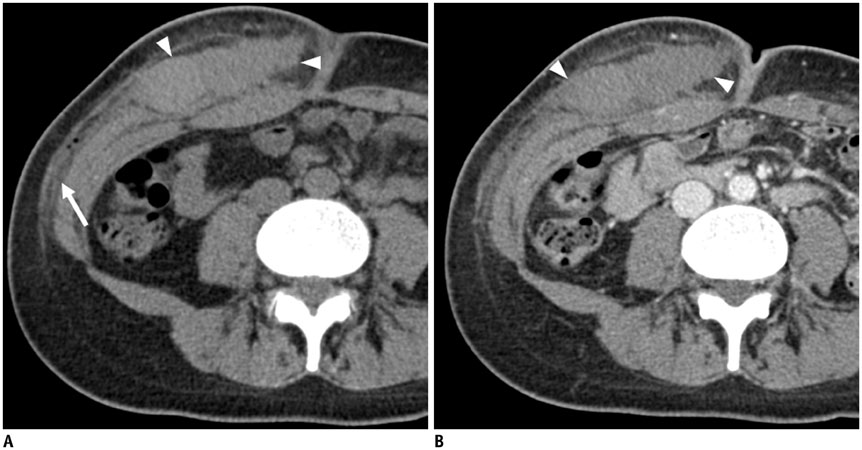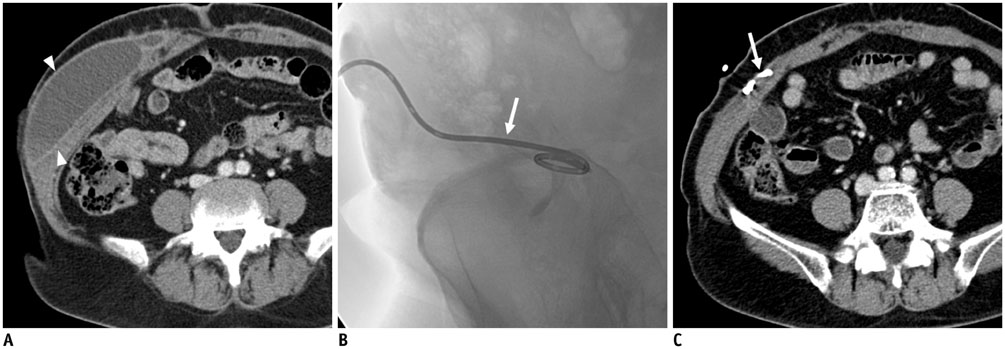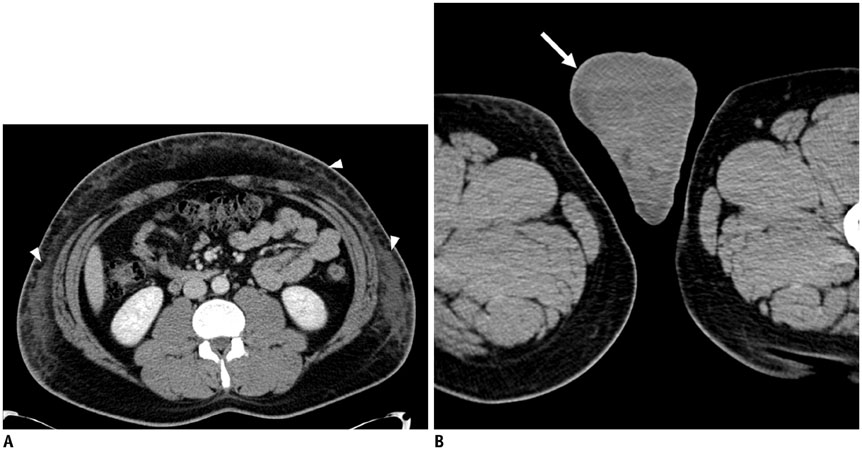Korean J Radiol.
2015 Dec;16(6):1197-1206. 10.3348/kjr.2015.16.6.1197.
Imaging Findings of Liposuction with an Emphasis on Postsurgical Complications
- Affiliations
-
- 1Department of Emergency Medicine, Gangnam Severance Hospital, Yonsei University College of Medicine, Seoul 06273, Korea.
- 2Department of Radiology, Severance Hospital, Research Institute of Radiological Science, Yonsei University College of Medicine, Seoul 03722, Korea. yelv@yuhs.ac
- KMID: 2344273
- DOI: http://doi.org/10.3348/kjr.2015.16.6.1197
Abstract
- Liposuction is one of the most frequently performed cosmetic surgeries worldwide for reshaping the body contour. Although liposuction is minimally invasive and relatively safe, it is a surgical procedure, and it carries the risk of major and minor complications. These complications vary from postoperative nausea to life-threatening events. Common complications include infection, abdominal wall injury, bowel herniation, bleeding, haematoma, seroma, and lymphoedema. Life-threatening complications such as necrotizing fasciitis, deep vein thrombosis, and pulmonary embolism have also been reported. In this paper, we provide a brief introduction to liposuction with the related anatomy and present computed tomography and ultrasonography findings of a wide spectrum of postoperative complications associated with liposuction.
Keyword
MeSH Terms
Figure
Reference
-
1. Lehnhardt M, Homann HH, Daigeler A, Hauser J, Palka P, Steinau HU. Major and lethal complications of liposuction: a review of 72 cases in Germany between 1998 and 2002. Plast Reconstr Surg. 2008; 121:396e–403e.2. Kim YH, Cha SM, Naidu S, Hwang WJ. Analysis of postoperative complications for superficial liposuction: a review of 2398 cases. Plast Reconstr Surg. 2011; 127:863–871.3. Stephan PJ, Kenkel JM. Updates and advances in liposuction. Aesthet Surg J. 2010; 30:83–97. quiz 98-1004. Grazer FM, de Jong RH. Fatal outcomes from liposuction: census survey of cosmetic surgeons. Plast Reconstr Surg. 2000; 105:436–446. discussion 447-4485. Frank SJ, Flusberg M, Friedman S, Swinburne N, Sternschein M, Wolf EL, et al. CT appearance of common cosmetic and reconstructive surgical procedures and their complications. Clin Radiol. 2013; 68:e72–e78.6. Shridharani SM, Broyles JM, Matarasso A. Liposuction devices: technology update. Med Devices (Auckl). 2014; 7:241–251.7. Lipoadvisor. Lipotite/BodyTite. lipoadvisor.com Web site. Accessed June 3, 2015. http://www.lipoadvisor.com/lipotite-bodytite/.8. Matarasso A, Levine SM. Evidence-based medicine: liposuction. Plast Reconstr Surg. 2013; 132:1697–1705.9. Sterodimas A, Boriani F, Magarakis E, Nicaretta B, Pereira LH, Illouz YG. Thirtyfour years of liposuction: past, present and future. Eur Rev Med Pharmacol Sci. 2012; 16:393–406.10. Rozen WM, Ashton MW, Taylor GI. Reviewing the vascular supply of the anterior abdominal wall: redefining anatomy for increasingly refined surgery. Clin Anat. 2008; 21:89–98.11. Grevious MA, Cohen M, Shah SR, Rodriguez P. Structural and functional anatomy of the abdominal wall. Clin Plast Surg. 2006; 33:169–179. v12. Fayad LM, Carrino JA, Fishman EK. Musculoskeletal infection: role of CT in the emergency department. Radiographics. 2007; 27:1723–1736.13. U.S. Food and Drug Administration. Liposuction: What are the risks or complications? FDA.com Web site. Last updated January 16, 2015. Accessed June 3, 2015. http://www.fda.gov/MedicalDevices/ProductsandMedicalProcedures/SurgeryandLifeSupport/Liposuction/ucm256139.htm.14. Lim H, Kim HJ, Cho YS. Active bleeding in abdominal wall developing after liposuction. Emerg Med J. 2008; 25:814.15. Kwak JY, Lee SH, Park HL, Kim JY, Kim SE, Kim EK. Sonographic findings in complications of cosmetic breast augmentation with autologous fat obtained by liposuction. J Clin Ultrasound. 2004; 32:299–301.16. Frank SJ, Flusberg M, Friedman S, Sternschein M, Wolf EL, Stein MW. Aesthetic surgery of the buttocks: imaging appearance. Skeletal Radiol. 2014; 43:133–139.17. Shin SU, Lee W, Park EA, Shin CI, Chung JW, Park JH. Comparison of characteristic CT findings of lymphedema, cellulitis, and generalized edema in lower leg swelling. Int J Cardiovasc Imaging. 2013; 29:Suppl 2. 135–143.18. Chung YE, Kim YE, Park I, You JS. Subcutaneous emphysema after carbon dioxide injection. J Emerg Med. 2014; 47:e89–e90.19. Hakkarainen TW, Kopari NM, Pham TN, Evans HL. Necrotizing soft tissue infections: review and current concepts in treatment, systems of care, and outcomes. Curr Probl Surg. 2014; 51:344–362.20. Chaudhry AA, Baker KS, Gould ES, Gupta R. Necrotizing fasciitis and its mimics: what radiologists need to know. AJR Am J Roentgenol. 2015; 204:128–139.21. Dixit VV, Wagh MS. Unfavourable outcomes of liposuction and their management. Indian J Plast Surg. 2013; 46:377–392.22. Geerts WH, Heit JA, Clagett GP, Pineo GF, Colwell CW, Anderson FA Jr, et al. Prevention of venous thromboembolism. Chest. 2001; 119:1 Suppl. 132S–175S.23. Geerts WH, Bergqvist D, Pineo GF, Heit JA, Samama CM, Lassen MR, et al. Prevention of venous thromboembolism: American College of Chest Physicians Evidence-Based Clinical Practice Guidelines (8th Edition). Chest. 2008; 133:6 Suppl. 381S–453S.24. Esmon CT. Basic mechanisms and pathogenesis of venous thrombosis. Blood Rev. 2009; 23:225–229.25. Han D, Lee KS, Franquet T, Müller NL, Kim TS, Kim H, et al. Thrombotic and nonthrombotic pulmonary arterial embolism: spectrum of imaging findings. Radiographics. 2003; 23:1521–1539.26. Cantarelli J, Godoy MF. Safe limits for aspirate volume under wet liposuction. Obes Surg. 2009; 19:1642–1645.27. Di Martino M, Nahas FX, Barbosa MV, Montecinos Ayaviri NA, Kimura AK, Barella SM, et al. Seroma in lipoabdominoplasty and abdominoplasty: a comparative study using ultrasound. Plast Reconstr Surg. 2010; 126:1742–1751.
- Full Text Links
- Actions
-
Cited
- CITED
-
- Close
- Share
- Similar articles
-
- Treatment of an abscess after massive autologous fat transplantation for breast augmentation with real-time ultrasonography-guided liposuction
- Power-Assisted Liposuction and Periareolar Pull-Out Technique for the Treatment of Gynecomastia
- Median Nerve Injury after Liposuction of Upper Arm
- Experiences of Seroma after Lipoabdominoplasty
- Using of a Straw as Liposuction Protector at the Treatment of Osmidrosis


